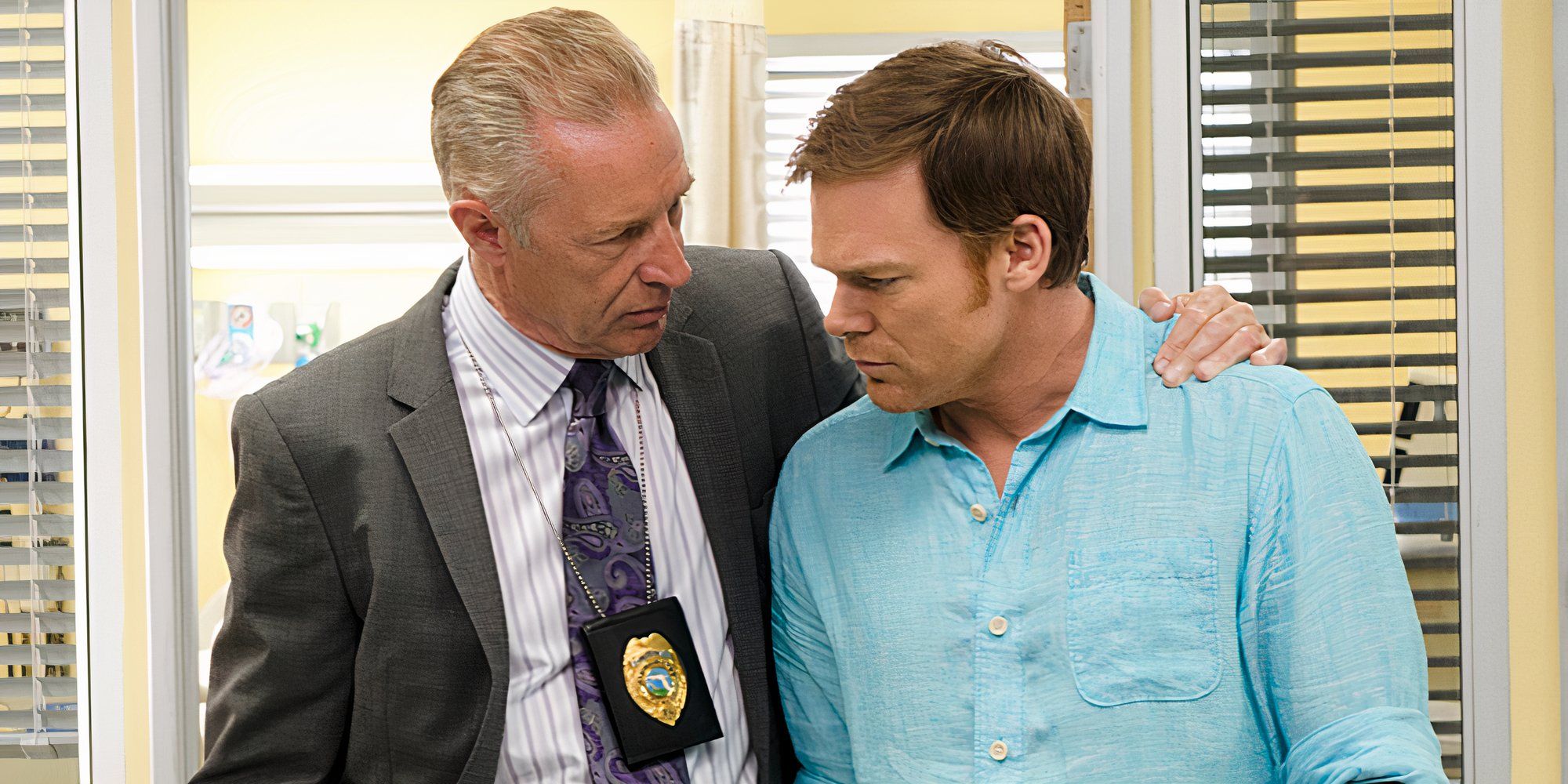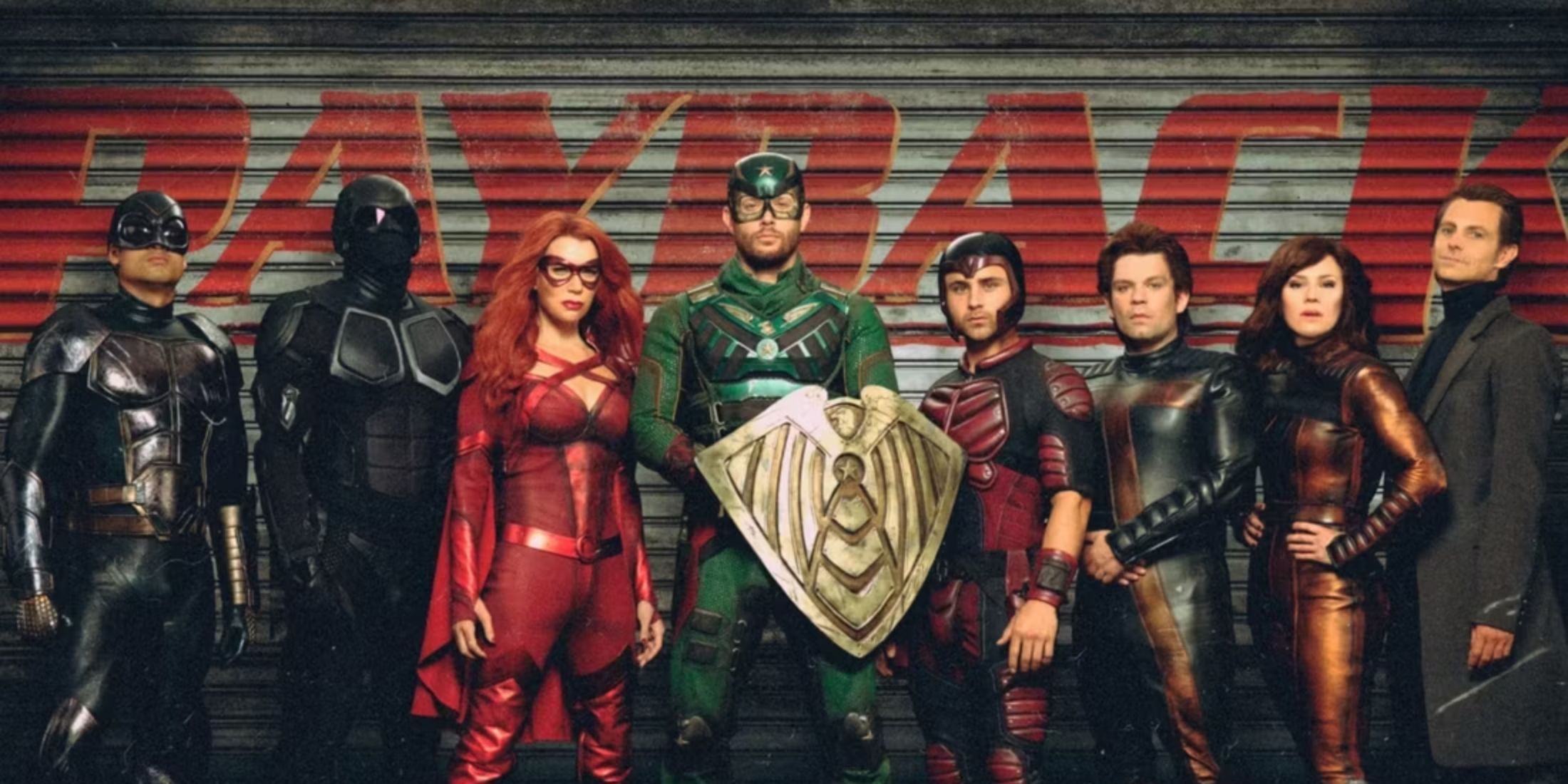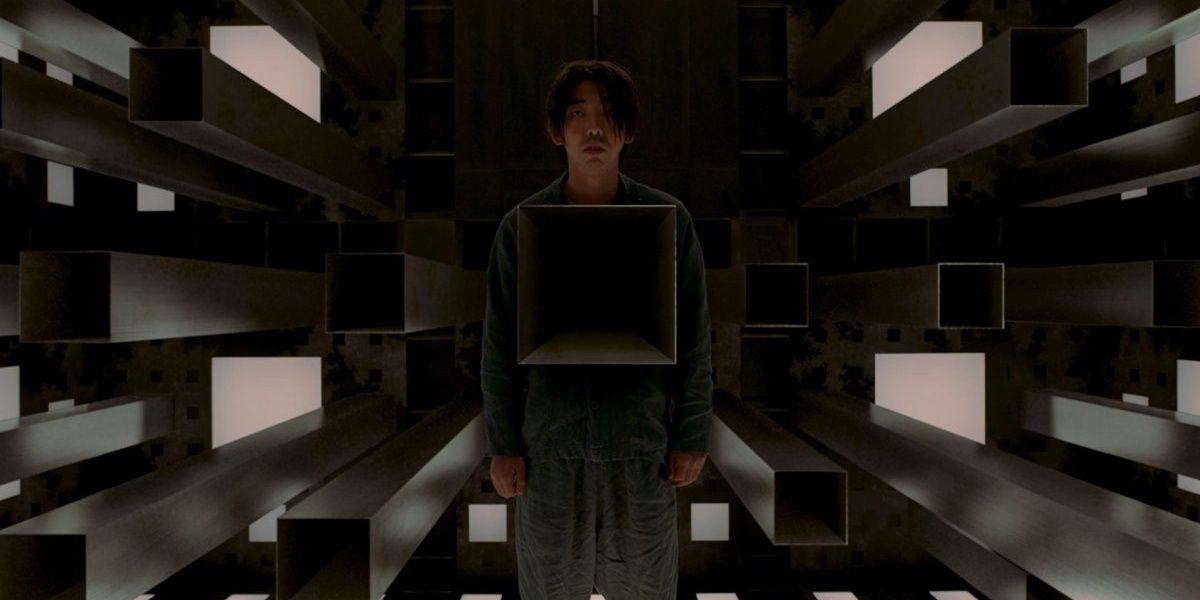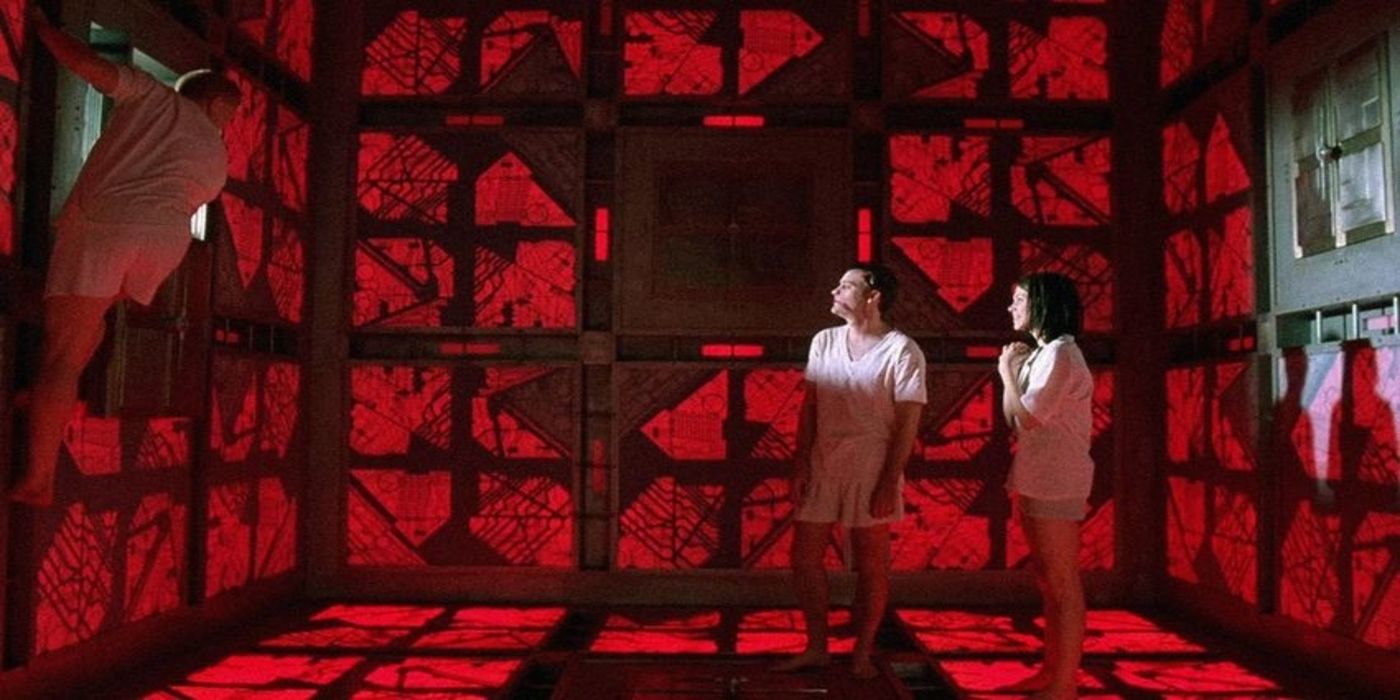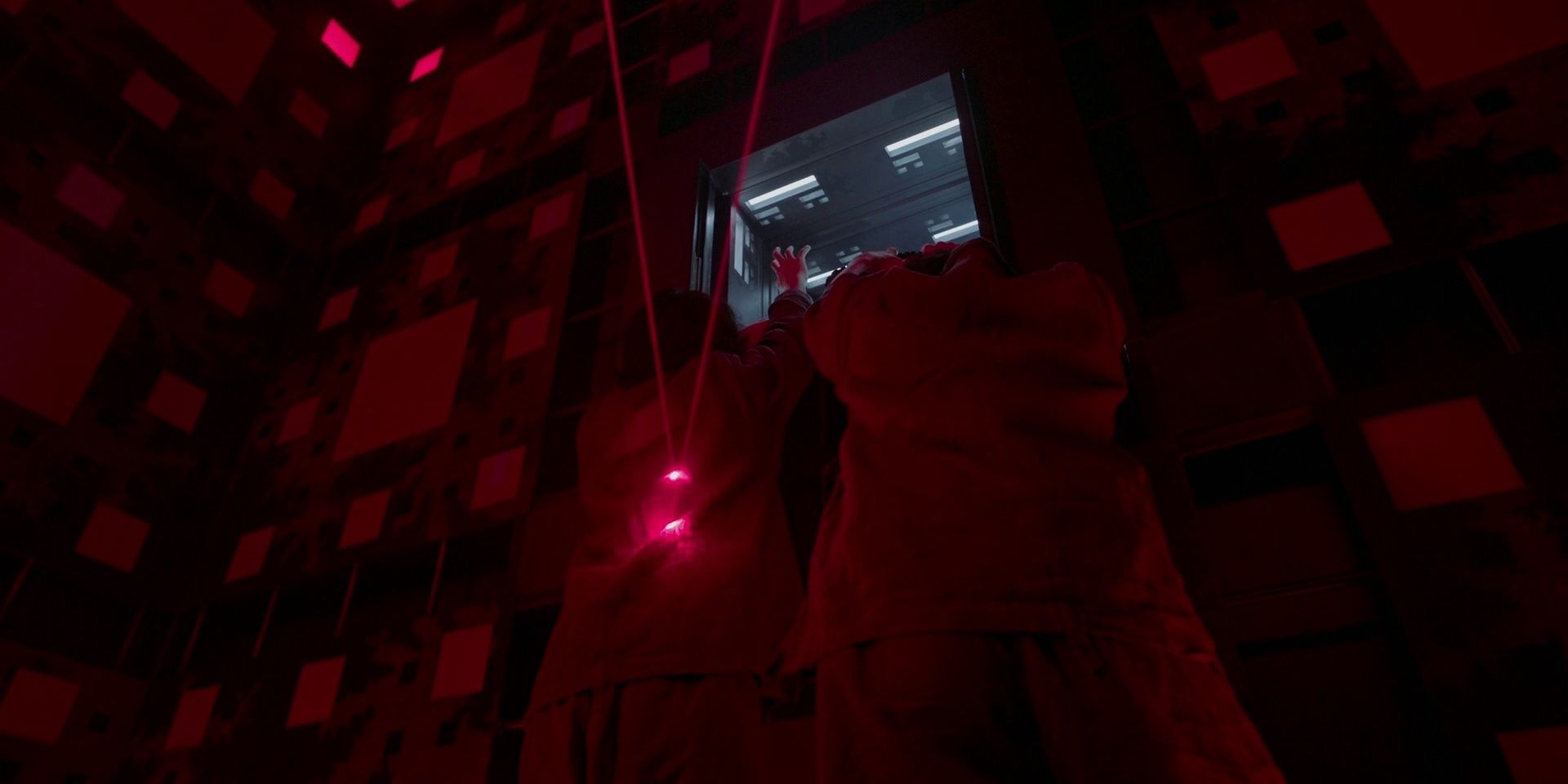Horror remakes have a terrible track record. It would stand to reason that a low-budget slasher or a clever ghost movie would benefit from a second take and a large cash infusion. Somehow, most examples ruin every good idea in the original film and tarnish its legacy forever. An influential cult classic like Cube can become a dull pastiche with an ill-conceived remake.
One of the most fascinating aspects of science fiction is its ability to mix and match old ideas into new ones. Countless stories borrow the same basic concepts, but a new societal reaction, hidden side effect, or related innovation can revolutionize its execution. Some additions can make the story worse.
What Is Cube About?
Like the 1997 cult classic, Koji Tokuo's Cube follows a group of strangers who wake up in a strange room. An engineer named Goto, an unemployed man named Ochi, and a 13-year-old boy named Uno find themselves in the titular cube without explanation. As they introduce themselves and attempt to understand their surroundings, a mysterious woman named Kai and an experienced man named Ide enter the room. Ide explains that there are a seemingly infinite number of rooms in every direction. Many of the rooms feature deadly traps, which will swiftly execute anyone unfortunate enough to enter. Along the way, they meet an older man named Ando. Ide has only made it as far as he has by tossing a boot into every room and entering the ones that don't combust. As they venture deeper into the cube, these strangers discover its unique scientific elements and attempt to escape their complex prison.
How Does Cube Differ From the Original?
Vincenzo Natali's 1997 Cube is the perfect cult classic sci-fi horror film. It appeals so strongly to a niche audience that it has opened many eyes to new subgenres. It was made on a shoestring budget by a writer/director making his feature debut. Natali takes influence from Cronenberg and Gilliam without ever borrowing from them directly. He's obsessed with geometry and social stratification. His debut feature became hugely influential. He should be considered the step immediately after Kafka in the long development of torture fiction. Cube is a cold, cruel film kept alive entirely by its brilliant character interplay. Quentin, Holloway, Worth, Leaven, Rennes, and Kazan are, like the titular superstructure, intricately designed in multiple beautiful layers. They're some of the finest characters in horror history. It's a fantastic film that juxtaposes the brutalism of its environments with the complex humanity of its victims. The 2021 remake borrows elements of both halves but critically misunderstands their applications.
The most notable violation of the original film's presentation is that Cube (2021) repeatedly leaves the cube. From the moment Cube (1997) opens, it never takes the audience out of the superstructure until the credits are ready to roll. In addition, the six prisoners all share the main character's duties. It's an ensemble piece. The 2021 remake chooses Goto, the film's take on David Worth, as its protagonist. Almost none of the other characters get more than a moment of character development. Goto has a backstory, but instead of keeping the claustrophobic atmosphere of the original film intact, Cube (2021) constantly depicts his past in flashbacks. The same scene plays in the character's mind over and over. It's stunningly repetitive in a way that the original Cube never was. This misappropriation of focus traps the story in one character's mind, tying everything that happens to one irrelevant event. Cube (2021) adds back in many elements Natali wisely cut out. As a result, the film is somewhere on the lower end of movies inspired by Cube.
How Does Cube End?
Goto's dark backstory is that he failed to convince his younger brother not to kill himself. Viewers will see the clip of Goto reaching out to his brother Hiruto before the sad young man leaps off of a building several times. Ide dies saving the other prisoners. Ochi murders Ando. He's decided that life isn't worth living outside the cube, so he plans to kill every other prisoner and himself. Ochi attacks Goto, nearly strangling him to death. Uno distracts Ochi while a trap pulls him off of Goto. With Ochi dead, only Goto, Uno, and Kai are left alive. Goto sacrifices himself to save Ochi, redeeming himself for failing to rescue his brother. Kai leads Uno to the end of the cube and allows him to leave, though his fate is unknown. The film reveals that Kai is a robot designed to guide and monitor prisoners. Uno is ostensibly free, Goto is still alive, and Kai moves on to the next group to start the process again.
Cube (2021) borrows the trappings of the original film, but it isn't as bold, clever, or innovative. The idea of doing Cube again with a larger budget and modern camera technology isn't a terrible one, but the Japanese remake failed to understand what made the original film great. The 1997 cult classic still holds up, and its 2002 sequel and 2004 prequel are solid entries in the franchise. Fans looking for the Cube experience can't go wrong going back to the original scary superstructure.

